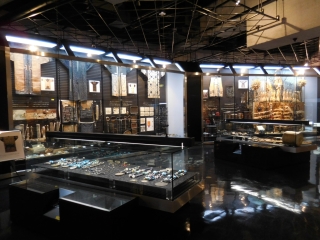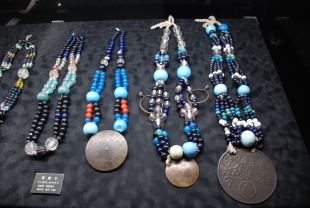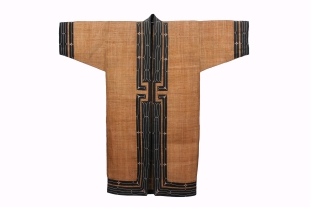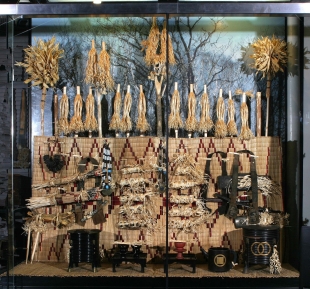4-1~4 Ainu people : People with Sakorpe
4-1 Ainu People
The Ainu are the indigenous people of northern Japan. Their culture is rooted in a spiritual reverence for the natural world and what has historically been a hunter-gatherer lifestyle, as well as extensive contact with surrounding cultures. The Ainu have unique customs, language, and beliefs.
From the end of the Jomon period (500 BCE) on, Hokkaido’s culture developed separately from the rest of the Japanese archipelago. Rice cultivation was adopted on the islands of Honshu, Shikoku, and Kyushu to the south, but the hunter-gatherer lifestyle continued in Hokkaido. Ainu culture likely developed from this post-Jomon culture through trade and contact with northern communities around the Sea of Okhotsk, and communities on Honshu.
The Ainu of Kushiro lived in villages along the Kushiro River. Records from the late Edo period (1603–1867) show there were around 10 villages along the river at that time, each with up to a dozen dwellings.

4-2 Ceremonial Necklaces
Accessories such as necklaces, earrings and armlets are worn by Ainu people as ornamentation and as protective amulets. Large necklaces are worn for religious ceremonies. These are fashioned with beads made of glass or semi-precious stones such as agate and amber, and often feature a large metal medallion. Most of the ornaments seen at the museum came from trade with Honshu and people on the Eurasian continent, with many of the medallions dating from the mid-seventeenth to eighteenth century. These medallions display close resemblances with those found at sites of the Nanai, an ethnic group living around the Amur River basin on the border of eastern Russia and northern China, indicating that there was trade with the continent.

4-3 Traditional Clothing Materials
Available raw materials are resourcefully used in Ainu culture. Deer, fox, and seal pelts are used to make clothing, and fish skin to make boots, and fibers from materials such as elm tree bark and nettle stems woven into cloth. As cotton from Honshu became more widely available in the mid-nineteenth century, they began to make cotton clothing. Men and women still wear kimono-shaped coats decorated with applique and embroidery in geometric patterns for ceremonies and special occasions. Common motifs include spiral and thorn patterns. These garments were sometimes adapted from kimono traded from Honshu, or used panels of kimono silk as decoration.

4-4 Ainu Spiritual Beliefs
Ainu culture emphasizes reverence for nature. Ainu traditionally believe that the human world is visited by kamuy (spirits) that are found in everything, including mountains, valleys, fire, water, plants and animals. They also believe there is another realm beyond this world where the kamuy come from, and where they return after completing their work here. Ceremonies are held to thank these spirits and send them back to their realm. When Ainu hunters kill a bear—which is considered a kamuy of many things including the mountains—they hold a ceremony to thank it and see its spirit off. Other important kamuy include orcas, regarded as spirits of the sea, and the Blakiston’s fish owl, believed to be a protector of villages. An outdoor altar (nusasan) made of woven cattail is set up outdoors for ceremonies with offerings to the kamuy and a row of carved wooden ritual sticks (inaw), placed in front of the altar. A full-sized nusasan decorated with ritual objects is on display at the museum.

Multilingual text and audio guide (Uni-Voice) on Ainu Exhibition
We introduced a multilingual text and audio guide system (Uni-Voice) on Ainu Exhibition.
This English-language text was created by the Japan Tourism Agency.
このページに関するお問い合わせ
生涯学習部 博物館 博物館担当
〒085-0822 北海道釧路市春湖台1番7号 博物館
電話:0154-41-5809 ファクス:0154-42-6000
お問い合わせは専用フォームをご利用ください。
